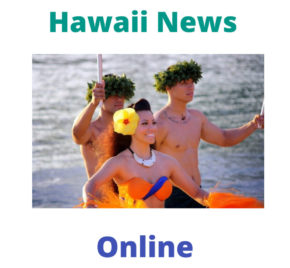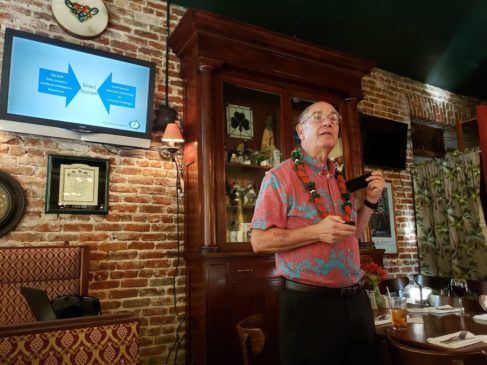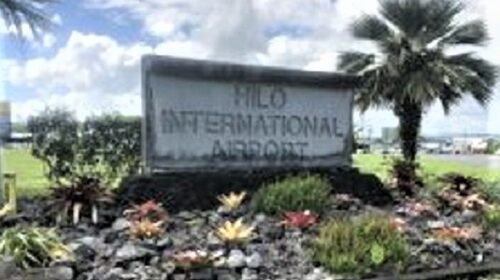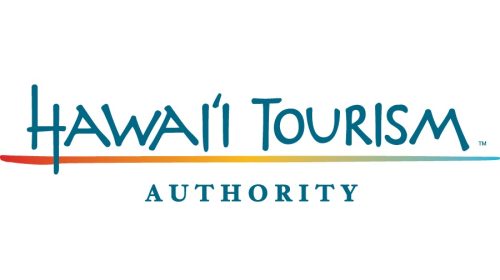Hawaii Tourism Nearing Tipping Point?
The guest speaker at the August 13th, 2019, Hawaii Tourism Wholesalers Association (HTWA) meeting was Hawai‘i travel industry professional, Frank Haas. Frank had been the wholesale business organization’s guest speaker nearly a year ago when things at the Hawaii Tourism Authority (HTA) were truly grim. His current message, “It’s been a year … what’s changed … what’s new?” was a little more optimistic because there have indeed been some significant HTA management improvements and a better understanding at HTA of what needs to be done. Frank’s presentation was “an update on Hawai‘i issues and a glimpse of ‘Smart Tourism,’ an emerging tourism management concept.”
Frank pointed out that our Hawaii tourism industry is facing many challenges and we are nearing some “tipping point” crisis situations unless all involved in the industry activate to see a number of specific changes made – and fast! As we all know, Hawaii government is not known for moving fast on anything but tourism is far too important to us all to not begin pushing to expedite the important changes in any way that we can. I’ll be doing a more comprehensive article for EturboNews and will delve further into what we can all “do” between now and the 2020 State Legislative Session beginning in mid-January.
In February, 2019 Frank Haas was a co-author with UH Professor Jim Mak and economist Paul Brewbaker of a policy paper on Hawai‘i Tourism titled “Charting a New Course for Hawai‘i Tourism,” which suggested that a new governance model and more resources are needed for Hawai‘i to effectively manage tourism. If not seen, it’s well-worth a read. Here’s the preface and document link:
“Despite a string of record visitor arrivals now totaling almost ten million annually, Hawai‘i tourism shows signs of trouble. Inflation-adjusted spending per visitor has trended downward. Diminishing economic contribution, eroding resident sentiment, and increasing congestion and stress on sites and attractions provide evidence that the current governance model is inadequate for effectively managing the increasingly complex issues facing Hawai‘i tourism.” Continued click here
Frank recently wrote an 8-page case study for a forthcoming book on overtourism that will be published by the Center for Responsible Tourism titled “Hawai‘i: Paradise on the Precipice” which he was kind enough to hand out to those who attended our meeting. He asked that the paper not be distributed electronically or otherwise published but he has kindly allowed me to send you the following abbreviated highlights. Frank also sent me his Powerpoint presentation which is attached below. It clearly illustrates many of Frank’s key points and recommendations.
Here are some points from the book : Hawai‘i: Paradise on the Precipice
By Frank Haas
– “Almost from the time Hawai‘i first welcomed outsiders, awestruck visitors described the islands as ‘paradise.’ After his visit in 1866, Mark Twain pronounced Hawai‘i to be ‘the loveliest fleet of islands that lies anchored in any ocean.’ …
– “Arrivals continue to grow, setting records in each of the last seven years. …
– “The islands are starting to experience the strain of mass tourism, but things haven’t reached a crisis stage yet. Despite the string of arrival records and a large tourist population, visitor satisfaction with Hawai‘i remains strong and hotels continue to command premium rates. But as tourism numbers increase, there are signs of trouble ahead.
– “The scope of the problem.

The Hawaiian Islands are as fragile as they are alluring.” … “the islands developed a unique culture and fragile ecosystems that can be threatened by development and growth – including the growth of tourism. Intense development stresses resources, detracts from the character of the place, and encroaches on what visitors come to see. …
– “Despite a significant renaissance in Hawaiian language and culture, the culture is often marginalized or misrepresented and important, nuanced cultural concepts can become cartoonish. The word aloha, a central concept in the Hawaiian culture, is often a pep-rally-like shout-out at events for visitors. A-loooooooooo-HA!!! …
– “Hundreds – or even thousands – of visitors descending on pristine or fragile sites are symptomatic of the tourism management challenge in Hawai‘i. The sheer numbers cause congestion and traffic jams and can degrade the quality of experience at these sites. …
– “The problem is exacerbated by new technologies and social media. Sites that once were ‘secret’ hideaways are now often overrun with visitors. …
– “These ‘secret’ sites do not have the infrastructure to accommodate large numbers of visitors, and the crowds upset local residents. Many of these discovered sites are culturally sensitive, on private land, or pose a danger to life and limb. …
– “The amount of money visitors to Hawai‘i spend per day has been declining so tourism’s economic contribution to the Hawai‘i economy has not kept pace with arrivals growth. …
– “Government has been slow in coming to grips with the rapid expansion of vacation rentals. …
– “… resident attitudes toward tourism have shifted. In a research series on resident attitudes toward tourism, support for the statement that tourism “brings more benefits than problems” has declined from a high of 80% in 2010 to 59% in 2018. …
– “The state and counties followed a relatively laissez-faire, hands-off attitude toward tourism management. With the growth in negative visitor impacts, restricted access has increasingly been implemented on a case-by-case basis as sites became overwhelmed. To date, implementation of restrictions and fees and other management programs have only been adopted when a site reaches a crisis point. …
– ” … as Hawai‘i visitor arrivals continue to set records, more and more sensitive sites have reached a crisis point and more controls are being put into place in response. These responses are ad hoc with little coordination since recreational facilities in Hawai‘i operate within different jurisdictions: Federal, State, and County. …
– “Needed Solutions. With alarm bells ringing, Hawai‘i is awakening to the issues brought on by unbridled growth. A new management team at the Hawai‘i Tourism Authority now speaks of balancing tourism marketing and tourism management and budgets are also being ‘rebalanced’ to address management issues. The definition of tourism success is shifting from gross measurements like visitor arrivals and nominal spending to measurements better aligned with sustainability, including both resident and visitor satisfaction. …
– “While an emerging focus on tourism management is a welcome change from a mindless focus on growth, the actions are still generally uncoordinated and underfunded. …
– “As the state’s lead agency for tourism, the Hawai‘i Tourism Authority has a mission ‘to strategically manage Hawai‘i tourism in a sustainable manner consistent with economic goals, community desires, and visitor industry needs.’ However, in the twenty years since its founding, achieving this mission on its own has been unrealistic because it lacks authority and funding to implement effective solutions. Oversite for tourism doesn’t really rest with a single agency like the HTA. Instead, oversite is spread over multiple state agencies, jurisdictions, non-profits, and industry groups. Until there is a coordinating mechanism and a high-level, statewide, adequately funded strategic plan in place, well-coordinated and effective responses to mass tourism will remain a challenge. …
– “The destination is at a proverbial tipping point requiring new thinking, additional resources and new management strategies to avoid descent from paradise to paradise lost.”
Frank concludes his paper with a line from Joni Mitchell’s 1970 hit “Big Yellow Taxi.” She once remarked that its warning was written about Hawai‘i; “Don’t it always seem to go that you don’t know what you’ve got ‘til it’s gone” — which is at the least, chilling.
Haas noted that he, Jim Mak and Paul Brewbaker are in the midst of preparing a paper to present to the political powers that be before the 2020 State Legislature. I’ll keep everyone informed about this and let you know how we can assist making the slow grinding wheels of government to move a little faster.
While many of the earlier warnings the team made a year ago have come to pass, Haas suggests there is still time to right our little canoe if we all pull together and that’s our challenge. We cannot just sit and watch. – Scott Foster




